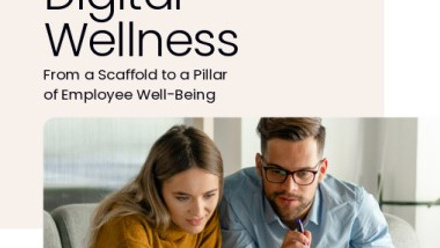How to approach employee benefits digitisation in 2018

Through our Global Employee Benefits Watch research, we’ve tracked organisations’ increasingly global approach to managing their benefits year on year. We found that there are clear advantages to devising, articulating and rolling out a globally consistent strategy underpinned by streamlined processes, systems and technology.
By following the blueprint outlined in this blog, organisations see an increase in operational efficiency and are three times more likely to see a reduction in admin errors and twice as likely to see a reduction in overcharges.
Don’t get left behind - embrace a lean approach
Organisations are in the process of actively building very different organisational ecosystems and networks than those previously seen.
There has been an exponential increase in the number of organisations with an HR shared service model in place - the number of organisations adopting this approach has doubled in just one year.
Our research found that when organisations implement both an HR shared service (HRSS) center and a technology solution to run their benefits programs, they were more likely to achieve success against their HR objectives.
The results show that the combination of HRSS and global technology is allowing benefits teams to be much leaner, reducing the administration burden on HR teams by at least 30% without sacrificing the employee experience.
Wider HR studies confirm the continued rise in the use of HRSS centers and moving support functions to shared services has been identified as the biggest area of planned organizational change over the next two years according to Mercer’s Global Talent Trends Study 2017.
While the advantages of this streamlined approach to HR administration are far-reaching, they are particularly significant for global benefits programs. This approach allows HR and benefits programs to mutually support each other, saving time and money as well as increasing responsiveness to changes along the way.
Organisations adopting this approach also see at least one less negative impact to their business, including missing legislative updates, errors in reporting and vendor overcharging.
Globally consistent technology is proving its worth
As the move towards HRSS models and benefits technology increases, so does the adoption of a global approach to benefits management. Given the complexity and diversity of benefits around the world, they have traditionally been considered difficult, if not impossible, to manage globally.
As a result, they have been left behind and are now the last wave of the HR digital revolution. However, organisations with a global benefits strategy that has been in place for over three years are four times more likely to have globally implemented HR shared services.
This illustrates a mutual reinforcement between having a global benefits strategy and the HR infrastructure to deliver it. An HRSS model provides the most efficient and practical way to deliver the value employers need from their benefits on a global basis.
Businesses cannot afford to continue processing benefits manually while digitising the rest of HR, neglecting the savings and employee engagement opportunities that technology can bring. As more embrace this change, those organisations who do not are falling behind.
Follow the blueprint
Global consistency of use is the common factor in achieving success. This approach provides the data needed to ensure full control and measurement of benefits programs globally, as well as delivering a great employee experience.
We refer to this approach as the ‘blueprint’ for success. The combination of an aligned global strategy, lean HR practices and the use of benefits management software globally to underpin it all leads to demonstrable efficiency gains and risk reduction. Those organisations adopting the blueprint are having significantly more success and 100% consider that they were effective or very effective in meeting their objectives.
Not all elements of the blueprint need to be adopted for either immediate or long-term success, but the right combination of these elements for any multinational organisation is a significant improvement in the two major success areas for global HR and benefits teams – much higher global employee engagement scores and demonstrably better administration and management of benefits.
Find out more about how you can follow the blueprint here.
This article was supplied by Thomsons Online Benefits.






